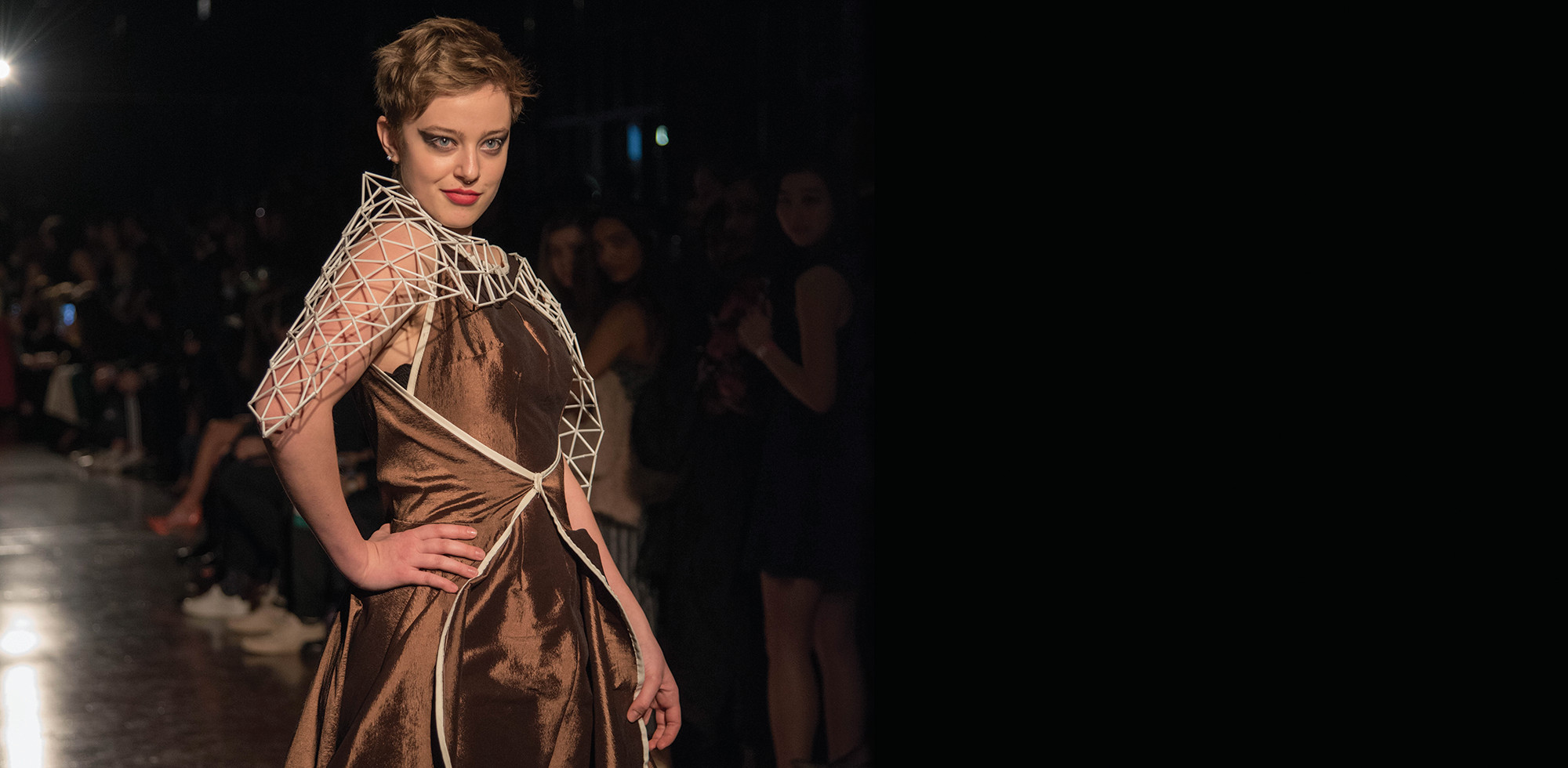
A design by Kathryn Hicks, SB’19. The bolero is made of drinking straws strung together with floral wire. (Photography by Alexandra Nisenoff, Class of 2021)
Where do fashion designers get their ideas? Three UChicago designers explain.
At MODA’s sold-out fashion show at Theater on the Lake this past February, student models showed off the work of student designers.
MODA, the fashion club at UChicago, runs a Designer Boot Camp program where students learn fashion design and garment construction in weekly workshops with a School of the Art Institute professor. During the camp, designers create three looks for the annual fashion show.
The Core asked designers Talia Friedland, AB’19; Sophie Harding-Jackson, AB’19; and Michael Zhu, AB’19, to explain the ideas behind their creations.
The interviews have been edited and adapted.
Talia Friedland, AB’19
I participated in Designer Boot Camp during my first year and have been designing for the MODA show ever since. Seeing my looks walk down the runway every year was definitely a highlight to my College experience.
My inspiration this year was "millennial trends” that were a little cliché. I incorporated things like avocado toast, Kim Kardashian, Ariana Grandeʼs “thank u, next,” and fanny packs.
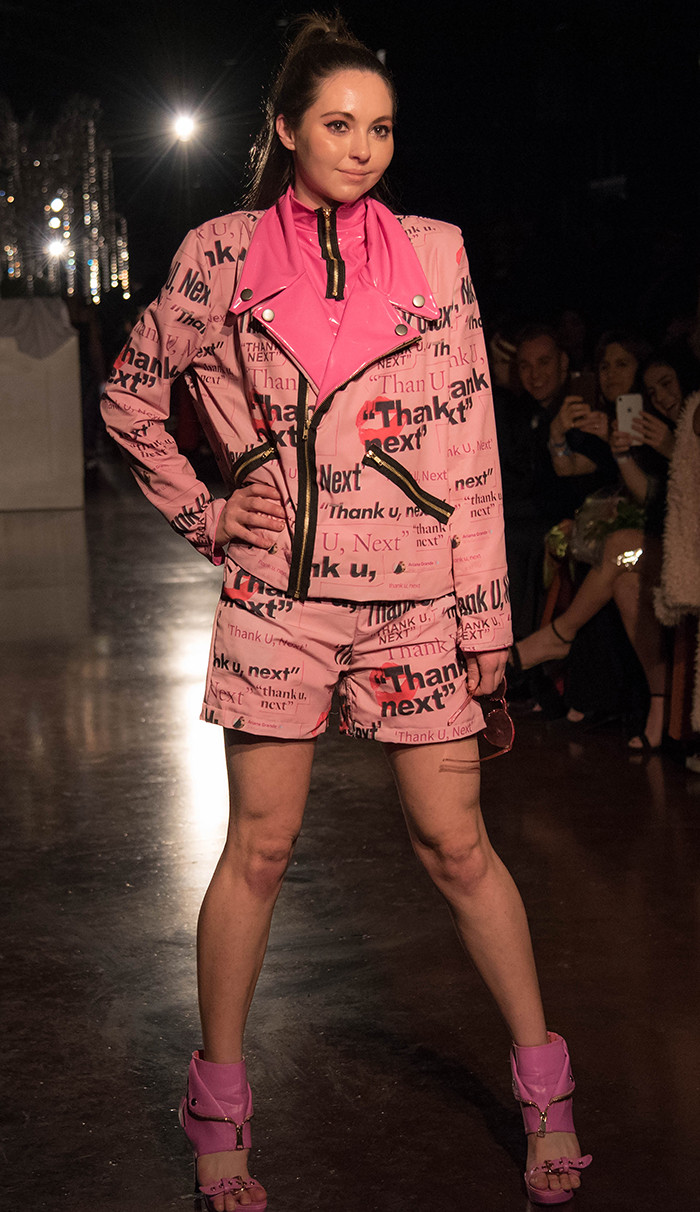
The inspiration for this look came from the overdone palm frond pattern that is on wallpaper, blankets, pillows, pencil cases, laptop cases, etc. I also included a hot pink neon light string around the fanny pack, which is a look that is all over Instagram. The color scheme is meant to be “neo mint,” a color that the New York Times named one of the next “millennial pinks." I used Gen-Z yellow, melodramatic purple, and millennial pink for my other looks.
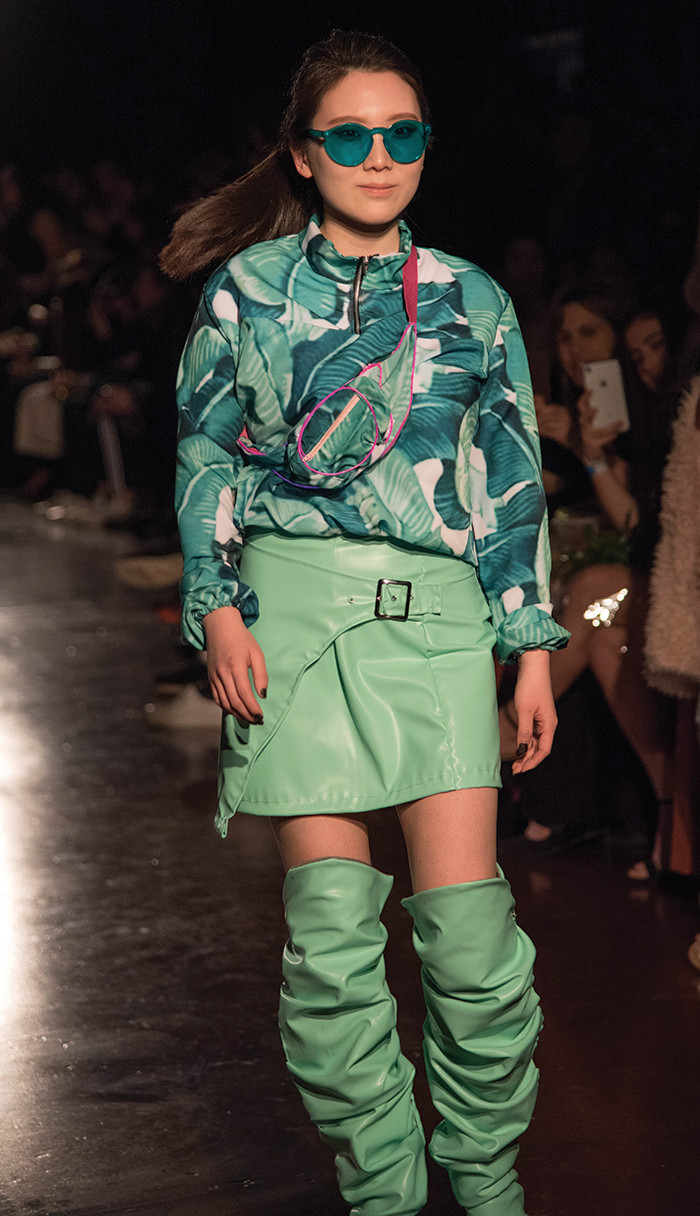
Those are over-the-knee boots that I made by hand using the base of some cheap heels I bought. I cut out the fabric, sewed them and attached the buckle, and hot-glued them to the base. The fabric is faux leather, the same as the skirt. Over-the-knee boots have been trending because of celebs like Ariana Grande and the Kardashian/Jenner clan.
Sophie Harding-Jackson, AB’19
My collection was themed around the idea of the body in conflict with clothes. My original design envisioned a shirt with stripes that took on a life of their own and rose up around the model's head like a cage.
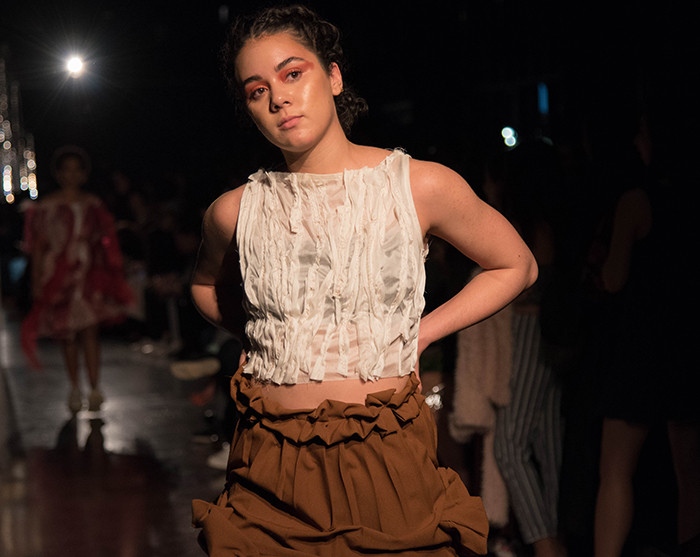
I had to abandon this plan as the cage flopped around more than I liked. In the end I explored how to create the impression of a standard striped shirt using fabric folds rather than shifts in color.
This was inspired by two thoughts. First, what is it for a dress to alter the natural shape of the body rather than highlight it? Second, how can you use parts of the body itself as clothing?
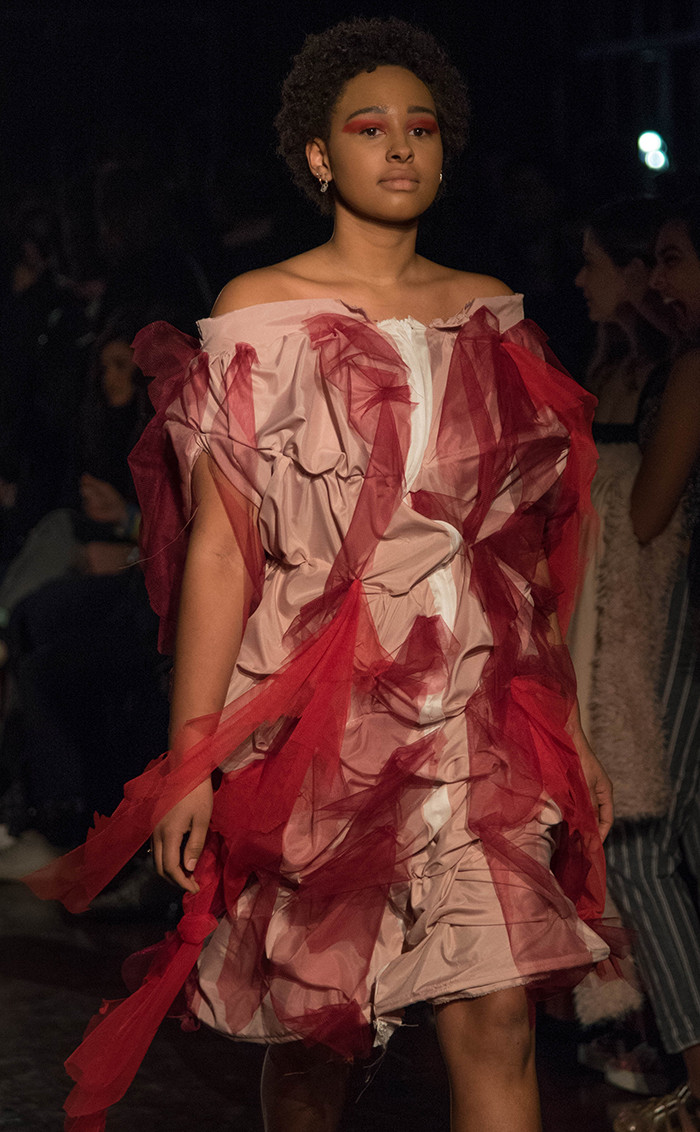
I looked at a lot of photos of the large intestine and created a dress that imitated its appearance. I wanted a dress that was lumpy and went in and out in unusual locations changing the wearer's silhouette. I liked the idea of using things that are definitely supposed to stay inside the human body as protection and decoration for it.
Both these pieces were made during Designer Boot Camp.
Michael Zhu, AB’19
My designs were meant to be individual and experimental pieces with no one unifying theme.
For the robe design, I experimented with comfortable and loose clothing like the button-up and bathrobe. I wanted to elevate the design by including more luxurious and streetwear elements such as the silky cloth, reflective fabric, and bright orange strips on the back of the robe.

For the track-and-field uniform design, I was inspired by my time running on the track-and-field team at UChicago. I think there are a lot of opportunities for athletic uniforms to be fashionable not only functional.
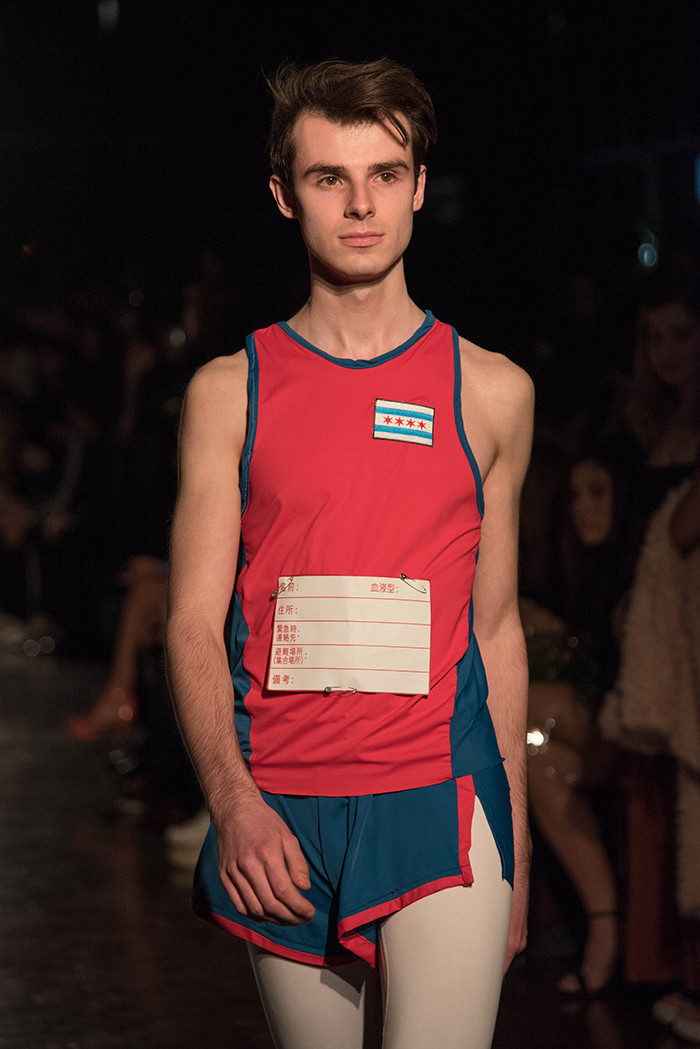
I participated in Designer Boot Camp during my junior year. I have designed both men’s and women’s wear for the two MODA shows I participated in.
Read more in “Model Students” from the Summer/19 Core.
